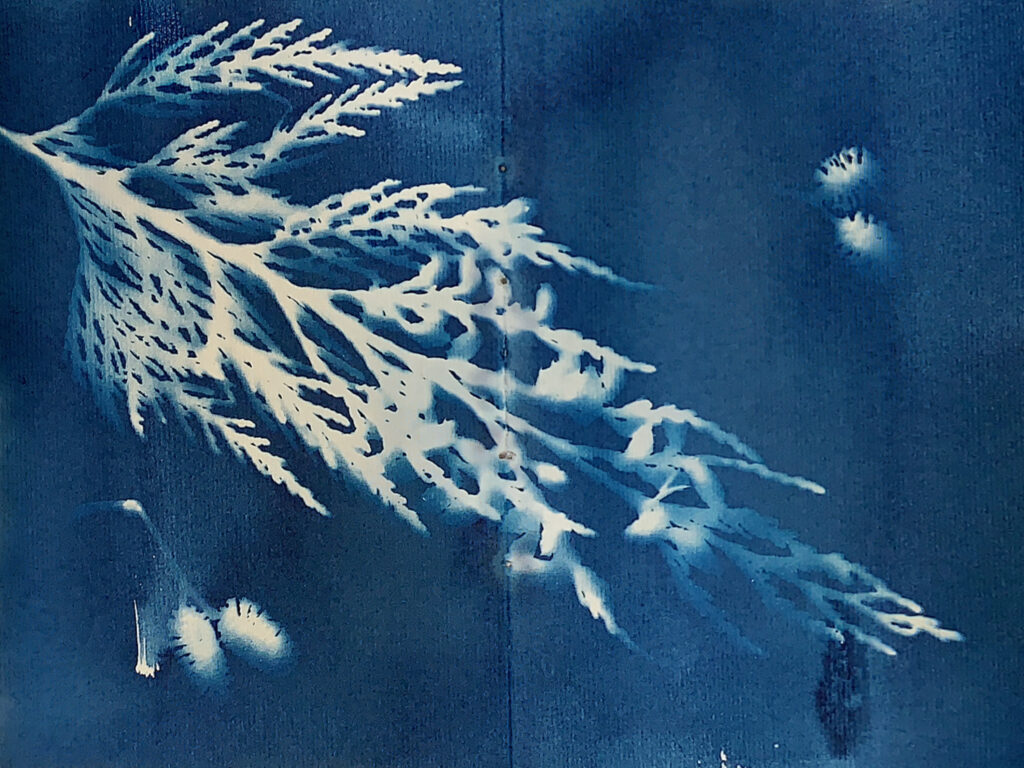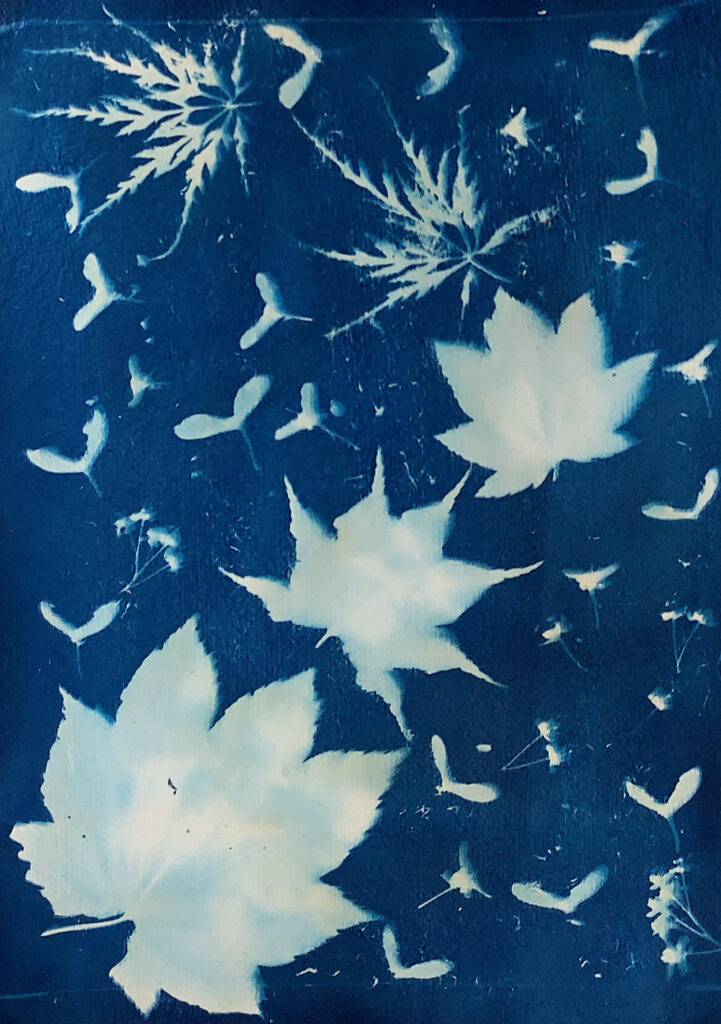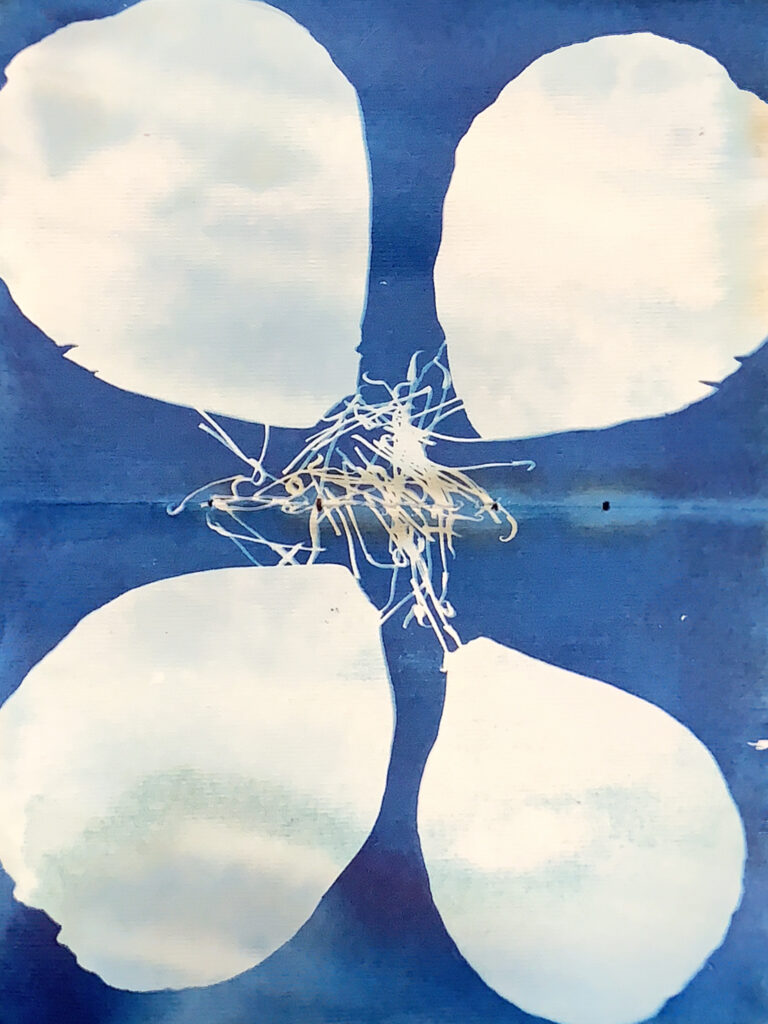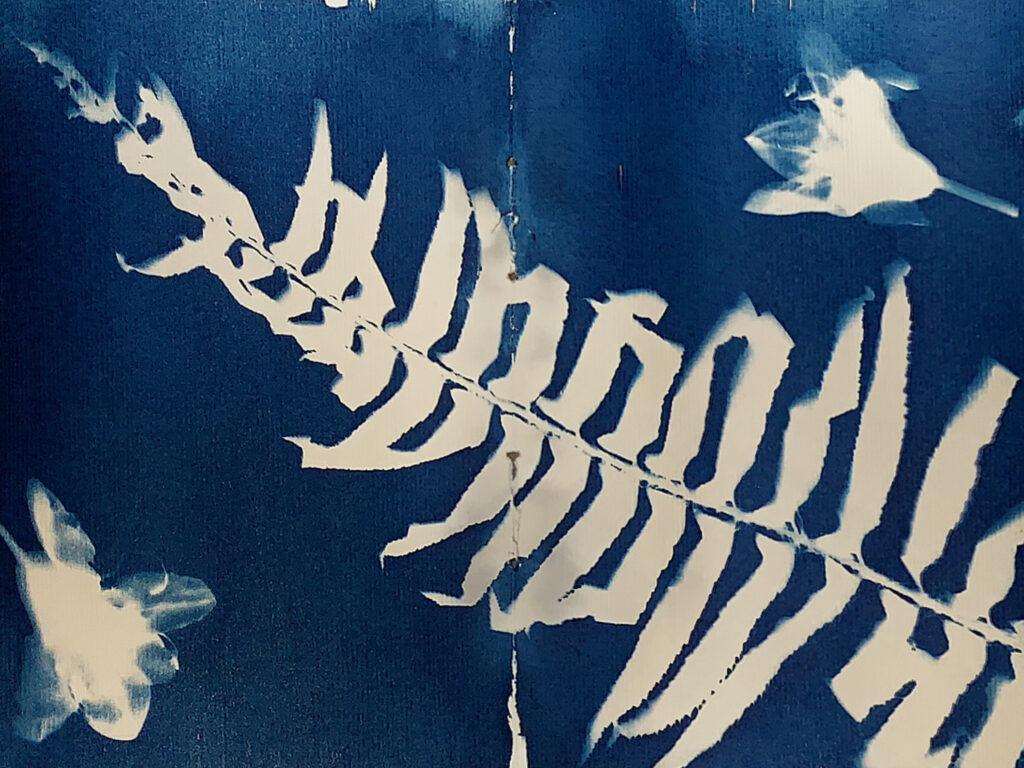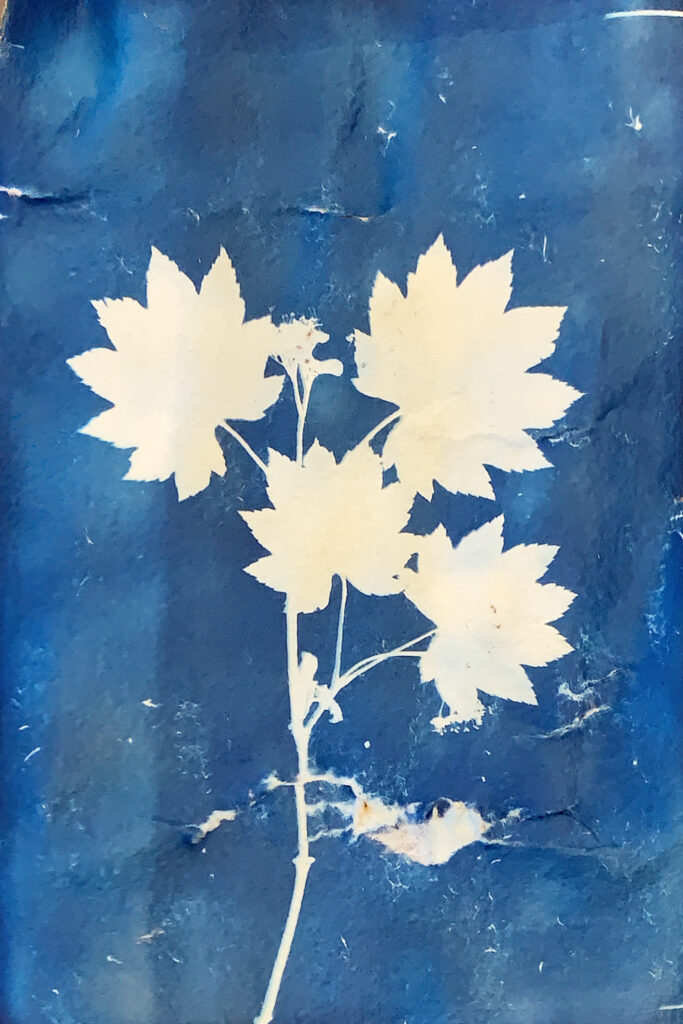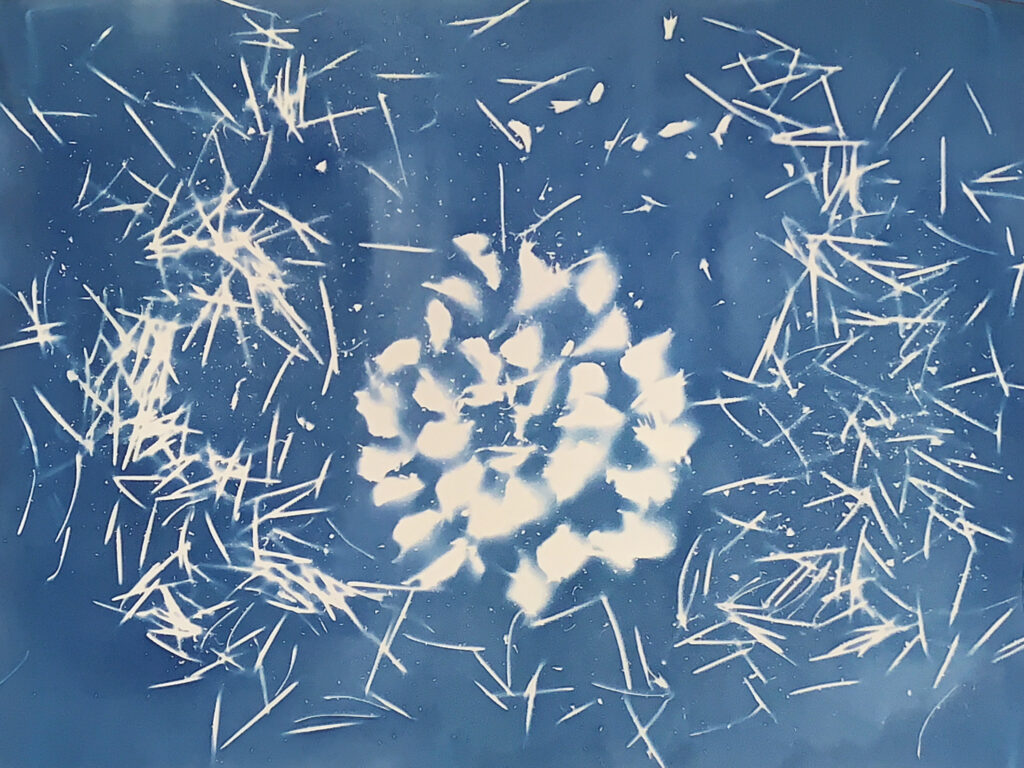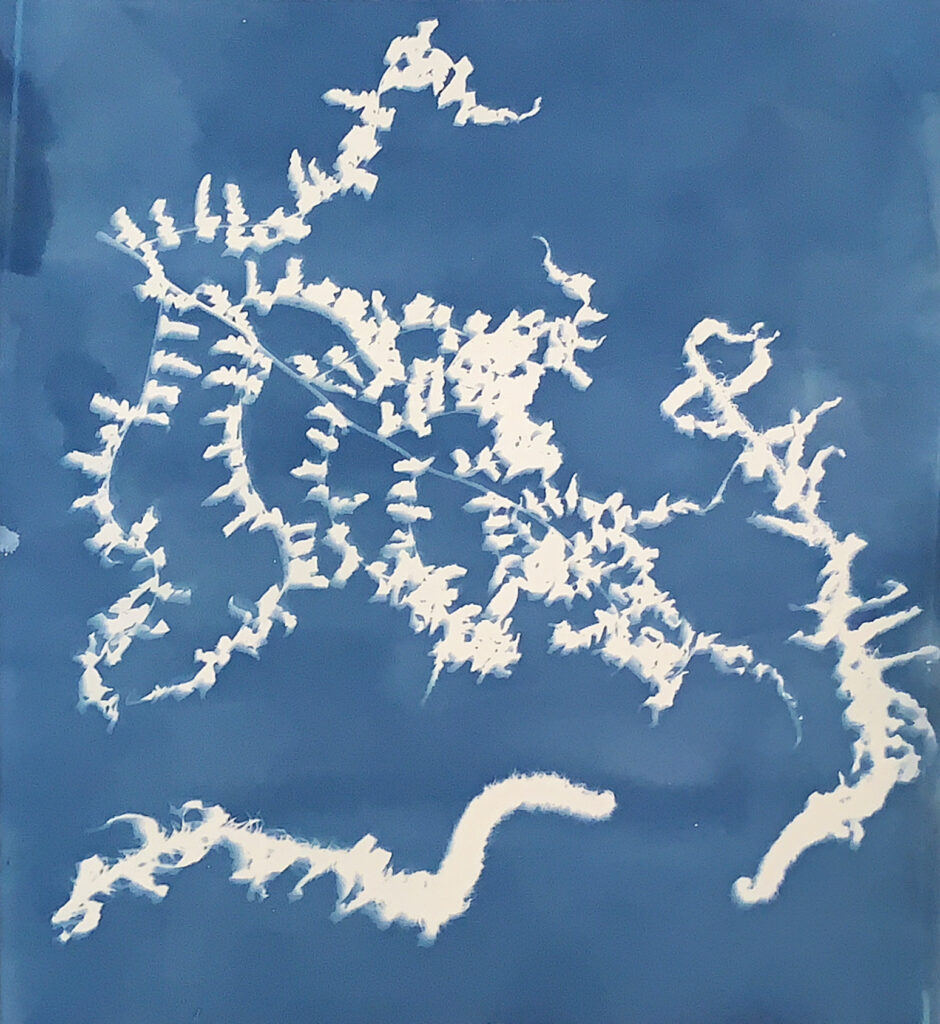Quarantine and social distancing has pushed us all into old spaces with new habits. For many, this has allowed them to reconnect or redefine their relationship with home. Part of that process for me has been looking closer at the nature and environment around my house in Oregon.
For my project, I made cyanotype contact prints of the plants and flowers in my yard. The process made me look closer at parts of my house that I normally would not pay attention to. As an allusion to Anna Atkins, a botanist and one of the first people to use the cyanotype process, I included the colloquial names of the plants in the prints.
Cyanotype contact prints of nature became popular during a time when people didn’t have access to different parts of the country or world. They were, for many, a window into a foreign world with unfamiliar floras. Considering this is the first time in modern history we have been under similar constraints, it felt both topical and nostalgic to use only cyanotype prints to show a piece of my home.
